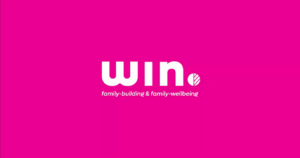Why Employers Must Help Employees Address Them
Modern life is complicated. That’s true for everyone, but it’s especially true for your employees who have families or want to have families. The majority of married couples are in two-income households, according to the
Pew Research Center. When both partners work, having and caring for children is increasingly difficult. Yet most households need two incomes to support themselves and their children, and many women and men do not want to give up their careers in order to have a family.

Family-friendly benefits such as coverage for fertility treatment, paid leave, and flexible scheduling are increasingly important to employees, according to a recent report from
the International Foundation of Employee Benefit Plans. Which benefits are employers offering, and how can they help employees address work-life conflicts?
Fertility Benefits Provide Options
Nearly one-third (31 percent) of employers with 500 or more employees offered some sort of benefits for fertility treatment in 2018, up from 24 percent in 2016. Employers most commonly cover in vitro fertilization (IVF) treatments (23 percent), fertility medications (18 percent), genetic testing (15 percent), non-IVF fertility treatments (13 percent), visits with counselors (9%) and egg freezing (7 percent).
Smaller employers are less likely to provide fertility benefits, but the numbers are increasing. Of employers with 50 or fewer employees, 10 percent offer some sort of fertility benefits, up from 4 percent in 2016.
Fertility benefits are especially important to employees who have postponed childbearing to pursue their careers or because they haven’t found a life partner. People striving to become parents over age 35 are more likely to need fertility treatment than younger employees.
Paid Leave and Flexible Scheduling
According to the report, paid maternity leave is a common benefit, offered by 41 percent of employers of all sizes. Paid paternity leave is less common, but 32 percent of companies did offer it in 2018. Paid adoption leave is offered by 21 percent of employers. Seventeen percent of workplaces offer paid family/caregiving leave. Flexible scheduling benefits are more popular, with just over half of employers offering flexible work hours or compressed work weeks. About 10 percent of companies offer job-sharing programs, where two or more employees share a single job.
During the novel coronavirus pandemic and the recession, some states implemented
work-sharing programs. These programs allow employers to furlough employees but let employees keep their jobs and supplement their lost hours with unemployment compensation. Some 200,000 workers across the country participated in work-sharing as of June 2020.
Family-Building and Flexible Scheduling Benefits Reduce Employee Stress
Employers increasingly recognize that benefits which help employees manage work-life conflicts empower their workforce to be more focused and efficient, in addition to reducing stress. These benefits aid in recruiting and retaining high-performing employees in competitive industries. Many companies also realize that recognizing and supporting employees in their lives outside of work is inherent to their company values. Employees who feel valued and supported can be excellent brand ambassadors for their employer.
 Family-friendly benefits such as coverage for fertility treatment, paid leave, and flexible scheduling are increasingly important to employees, according to a recent report from the International Foundation of Employee Benefit Plans. Which benefits are employers offering, and how can they help employees address work-life conflicts?
Family-friendly benefits such as coverage for fertility treatment, paid leave, and flexible scheduling are increasingly important to employees, according to a recent report from the International Foundation of Employee Benefit Plans. Which benefits are employers offering, and how can they help employees address work-life conflicts?



